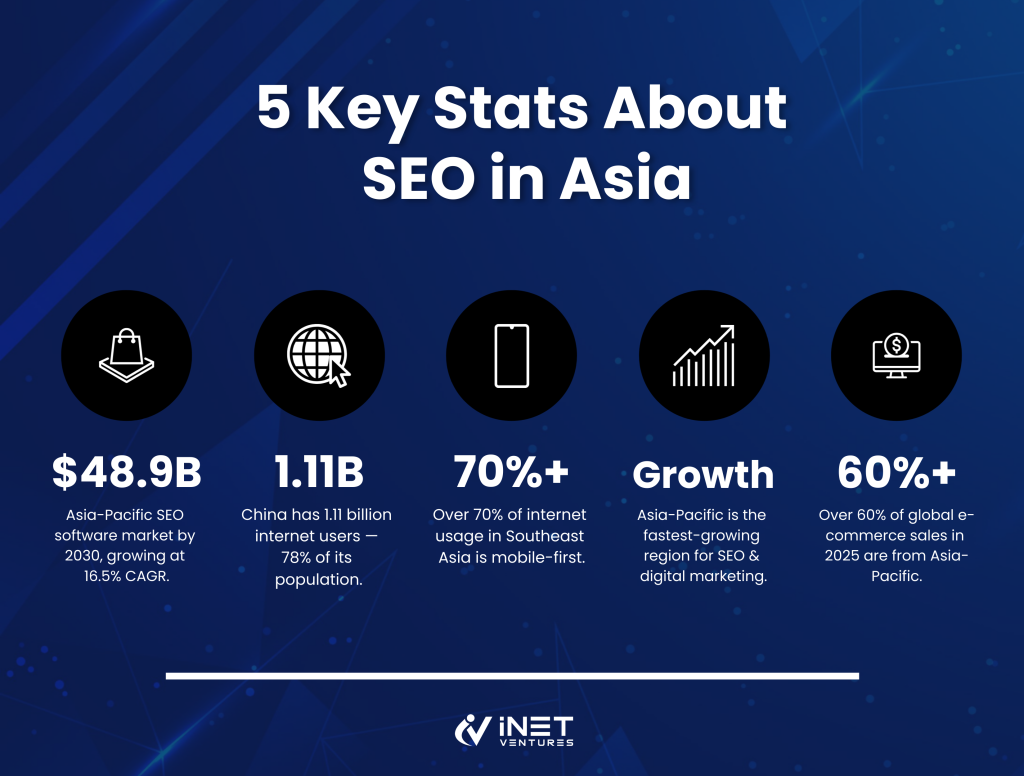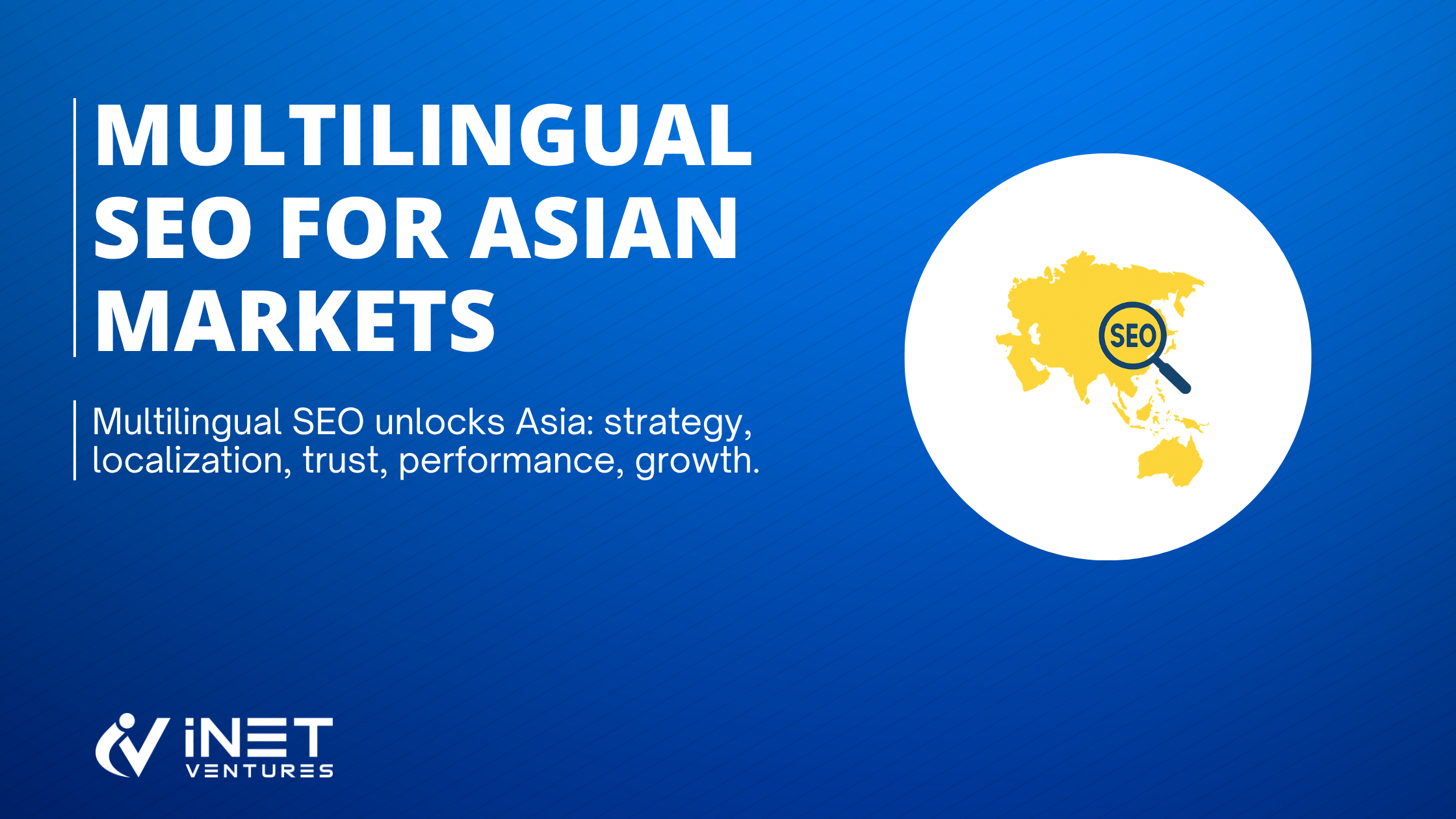Asian growth looks massive from the outside, really —until you hit the wall of language, culture, and platform fragmentation. If you’ve tried to scale a “global” playbook across Thailand, Vietnam, Japan, Korea, and beyond, you already know: English-only is a ceiling, not a strategy. The teams that win combine rigorous international SEO architecture with country-by-country localization, backed by workflows that keep every language version fast, crawlable, and up to date.
Below is the playbook I use when advising brands expanding across Asia. It’s opinionated, practical, and battle-tested.
Why multilingual SEO is your growth lever (not just a translation task)
- Search is local. The same product solves different problems in Bangkok vs. Tokyo; the query intents are different, so your keywords and content must be, too.
- Trust is linguistic. Users convert when they feel understood—language, currency, forms, delivery options, imagery, and even tone of voice shape that trust.
- Platforms and engines vary. Google dominates in many markets, but Naver (KR), Baidu (CN), and Yahoo! Japan (JP) each have quirks that affect indexing, rich results, and link acquisition.
- If you want a specialist partner on the ground, explore SEO services (Thailand).
Google Search Central puts it simply: “Use
hreflangto tell Google about alternate language versions of your page.”
This is the backbone of any serious international setup and the difference between ranking the right page in the right market versus cannibalizing yourself.
The pillars of a high-performing multilingual setup
| Pillar | What Great Looks Like | Frequent Failure Mode |
|---|---|---|
| Market-native keyword research | Build keyword sets from local intent, not translations. Validate with SERP reads and native speakers. | Directly translating English keywords; missing idioms and job-to-be-done queries. |
| Information architecture & URL strategy | One canonical site with subfolders per locale (e.g., /th/, /ja/) for shared authority; clean, crawlable paths. | Spraying subdomains or ccTLDs without reason; orphaned pages per market. |
| Hreflang & canonicals | Complete, consistent hreflang pairs with a self-reference and a correct canonical. | Missing reciprocals; mixing x-default; canonicalizing away local pages. |
| Local content & UX | Messaging, imagery, CTAs, pricing, and forms feel native; support and delivery options explained locally. | Word-for-word translations; English screenshots; wrong currency/units. |
| Technical performance | Edge caching, local CDNs, and image compression hit Core Web Vitals in bandwidth-constrained regions. | One global CDN origin; bloated JS; slow fonts; unoptimized images. |
| Local authority | Digital PR and partnerships with regional publishers, directories, and influencers. | Buying generic links; ignoring local trust signals and citations. |
| Measurement | GA4/analytics views and dashboards by locale, mapped to Search Console properties per language folder. | One blended view; no per-locale conversion tracking; slow iteration. |
Country nuances that change your SEO plan
- Thailand: Visual storytelling works. Thai-language pages with clear mobile UX and Line/WhatsApp contact options beat wordy English pages. A strong Google Maps presence supports discovery.
- Japan: SERPs reward meticulous on-page quality, structured data, and brand credibility. Japanese copywriting standards are high—invest in editorial, not just translation.
- South Korea: Naver still matters. Blog and “post” ecosystems influence discovery. Paid + organic integration is common; content must feel conversational and current.
- Vietnam & Indonesia: Mobile-first, price-sensitive markets. Lightweight pages, social proof, and clear delivery/returns info lower friction and lift CVR.
- Singapore & Hong Kong: High competition and bilingual behavior. Thought leadership plus technical excellence wins in B2B; link earning via PR is realistic.

Execution blueprint (90 days to scalable international SEO)
Weeks 1–3 — Foundation & research
- Market scoping: pick 2–3 priority locales to avoid spreading too thin.
- Native-language keyword research: SERP teardowns + competitive gap analysis.
- Architecture: confirm /locale/ subfolders, sitemap strategy, and Search Console setup per folder.
- Content briefs: per market, per funnel stage (problem, solution, brand).
Weeks 4–8 — Build & ship
- Localized page creation (not just translation): headlines, benefits, objections, CTAs.
- Technical: implement
hreflang, self-referencing canonicals, localized breadcrumbs, schema. - Performance: compress assets, ship critical CSS, defer non-essential scripts; test on local 3G/4G profiles.
- Authority: begin country-specific digital PR and directory citations; recruit local partners.
Weeks 9–12 — Measure & scale
- Dashboards per locale: impressions, CTR, top queries, conversion rate, assisted conversions.
- Iterate briefs based on SERP wins/losses.
- Add programmatic internal links to boost priority pages per market.
- Plan next two locales now that the machine is humming.
For the local visibility layer, our Local SEO Guide pairs perfectly with regional rollouts. And to keep ops lean, shortlist tools from these automated SEO platforms to handle audits, internal linking, and reporting across languages.
Content that actually converts (beyond rankings)
Map copy to intent, not language. When a Thai query signals “compare,” you need comparison blocks, star ratings, and localized proof. When a Japanese query signals “is it safe/legit?”, publish explainer FAQs, certifications, and detailed process pages. In Korea, product-led blog content with practical imagery often beats generic long-form.
Localize CTAs and risk reversals. Returns, warranties, support hours, and payment methods should reflect local expectations. That one detail often lifts CVR more than any meta tweak.
Images and examples must be native. Show Thai storefronts, JP UI screenshots, KR chat interfaces, VN delivery methods—anything that says “we built this for you.”
Technical details that make or break international rankings
hreflangdiscipline: Generate files automatically from your CMS; validate reciprocals; audit weekly for drift.- Sitemaps per locale: Submit in Search Console; keep URLs stable to preserve signals.
- Avoid parameter soups: Use clean paths (
/th/product/…) rather than?lang=th. - Edge & CDN: Serve fonts locally, compress WebP/AVIF, and lazy-load below-the-fold media.
- Language detection: Never auto-redirect based on IP without offering a persistent language switcher and honoring user choice.
Measurement: know what “good” looks like
- Leading indicators (0–30 days): Correct indexing per locale, growing impressions for target queries, CTR improvements from native titles/meta.
- Core outcomes (30–90 days): Non-brand clicks by locale, assisted conversions, demo/sign-up rate per language, CPA trending down.
- Compound effects (90–180 days): Local keyword breadth, branded search lift, referral traffic from local publishers, and higher LTV from localized cohorts.
Create Search Console properties per subfolder and GA4 views/collections per locale. Tie them to a single Looker Studio dashboard for executive rollups, but keep the ability to drill down by language.
Common pitfalls (and how to avoid them)
- Translating everything at once. Start with your revenue pages (category, product, solutions) and a handful of high-intent blogs. Quality beats scale in phase one.
- Letting locales drift. Put content parity checks in your editorial calendar so TH/JP/KR pages don’t fall out of sync after updates.
- Copying link tactics. What earns coverage in Singapore won’t necessarily move the needle in Tokyo. Build PR lists per market.
- Ignoring local help channels. In Thailand, adding Line contact + localized FAQs can lift conversion rates immediately.
When to partner (and what to demand)
If headcount is tight, bring in a specialist. A capable partner should:
- Provide native keyword research with SERP screenshots and commentary, not just CSV exports.
- Own
hreflangQA and provide automated diffs so you see changes week to week. - Deliver local PR calendars and publisher shortlists per market.
- Commit to a single measurement model across locales so performance is truly comparable.
Final word
Multilingual SEO in Asia is where craft meets process. The craft is empathy—understanding the job-to-be-done in each market and speaking that language precisely. The process is infrastructure—hreflang, clean URLs, fast pages, and a release rhythm that keeps every locale fresh. Do both well and you won’t just rank; you’ll win market share with content that feels like it was built locally—because it was.

Sarang Bhargava is an avid technology enthusiast and content creator with over half a decade of experience. As a part of Systweak Software, he specializes in writing about software, apps, and cybersecurity-related topics. His passion for writing stems from experimenting with various apps and software-spanning devices and operating systems. He also loves to stay updated with the latest trends and innovations in technology. When not writing, you can either find him dozing off or binging on web series and movies.


